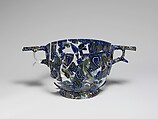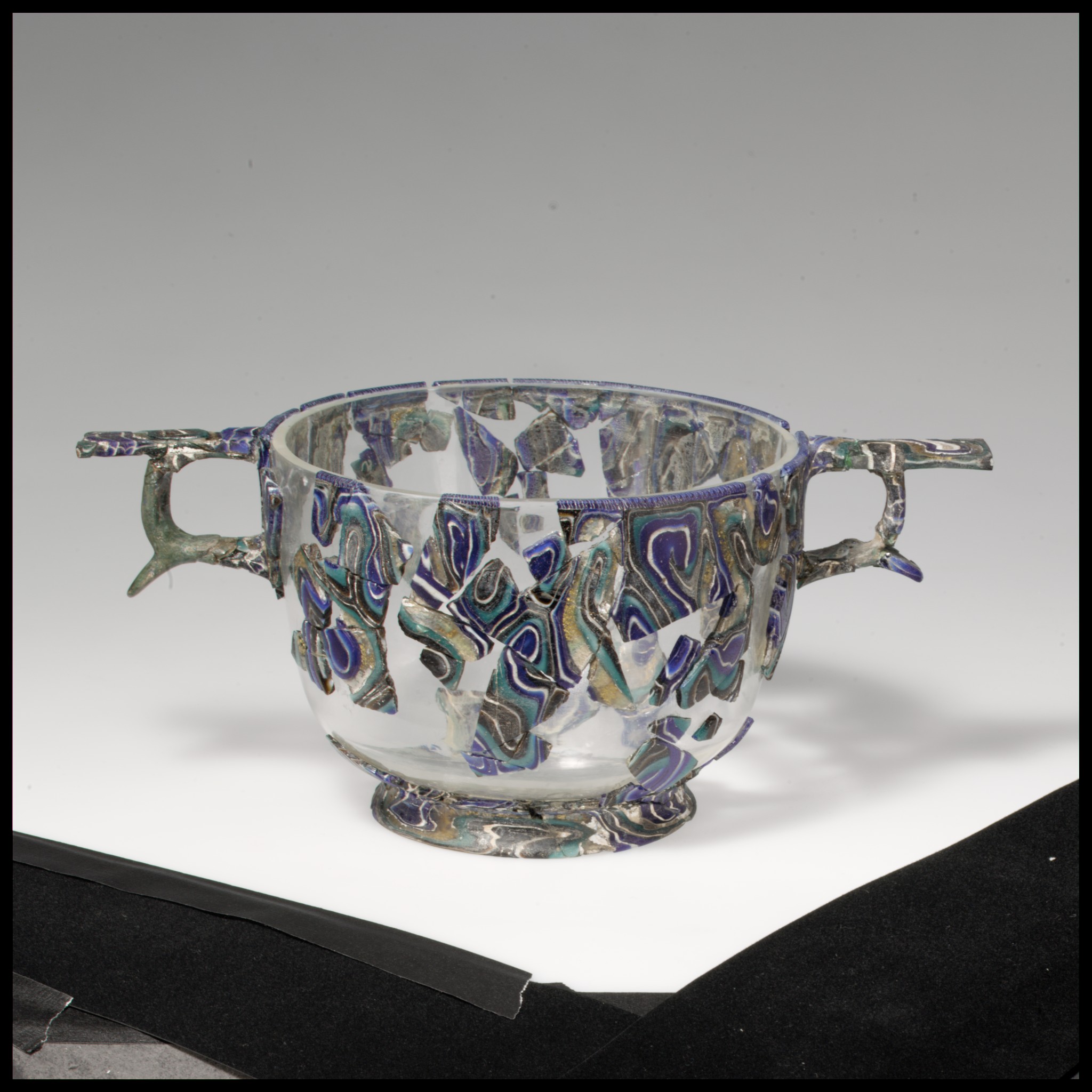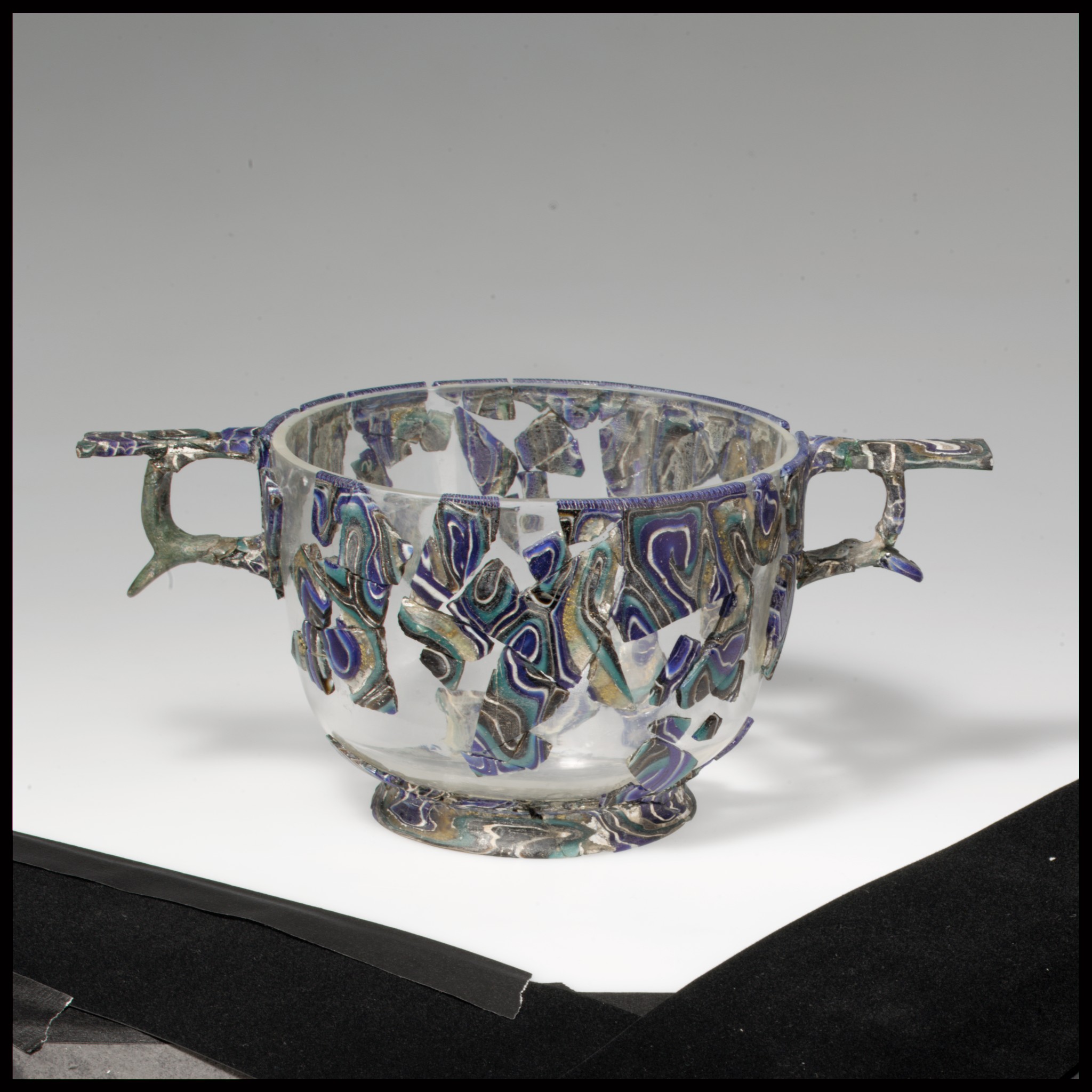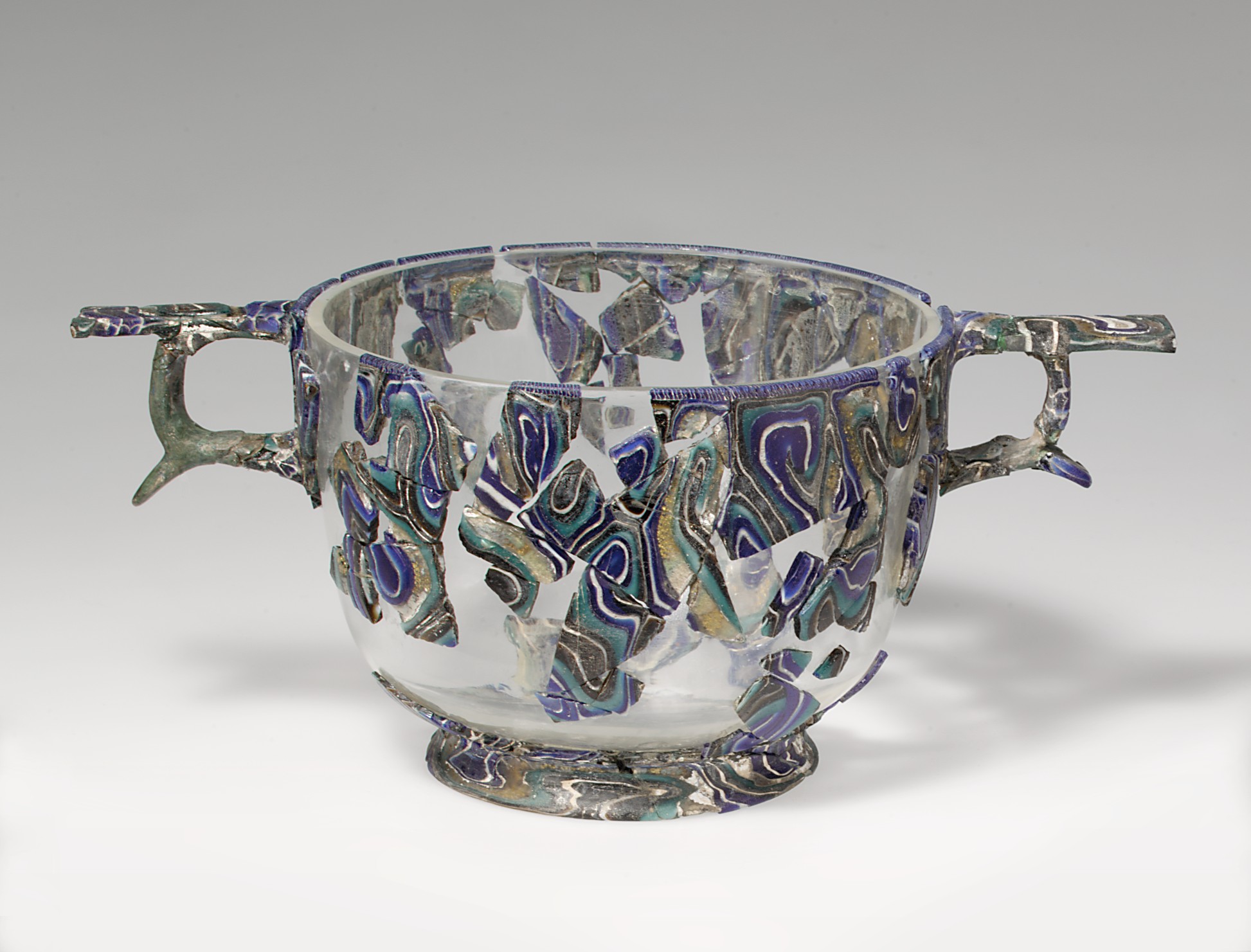Glass gold-band mosaic scyphus (drinking cup)
Translucent cobalt blue, deep honey brown, turquoise green, opaque white, and colorless enclosing gold leaf.
Applied vertical coil rim, with slightly rounded top edge; convex curving side tapering downward; applied splayed base ring with flat bottom edge; slightly convex bottom; two ring handles, applied in carved back rectangular pads on upper side and below rim, with flat thumb-rests above rings and projecting wings above and below.
Gold-band mosaic pattern formed from polygonal sections of serpentine layered canes in combinations of blue with white central line, brown with white central line, colorless with gold leaf, and green; the length is wound three times round body, being fused together across bottom; a blue network cane wound spirally with a white thread is attached as a rim.
Reassembled from over 250 fragments, with many remaining holes; pitting, weathering, and patches of iridescence.
Most late Hellenistic glass drinking cups are made of colorless or monochrome translucent glass. This example is highly unusual in that it is made from fused canes of polychrome mosaic glass, which include bands of gold leaf between two layers of colorless glass. The cup, despite its fragmentary condition, is probably the largest surviving example of an ancient vessel made using gold-band glass. It may have been made for the luxury market in Rome.
Due to rights restrictions, this image cannot be enlarged, viewed at full screen, or downloaded.
This artwork is meant to be viewed from right to left. Scroll left to view more.






